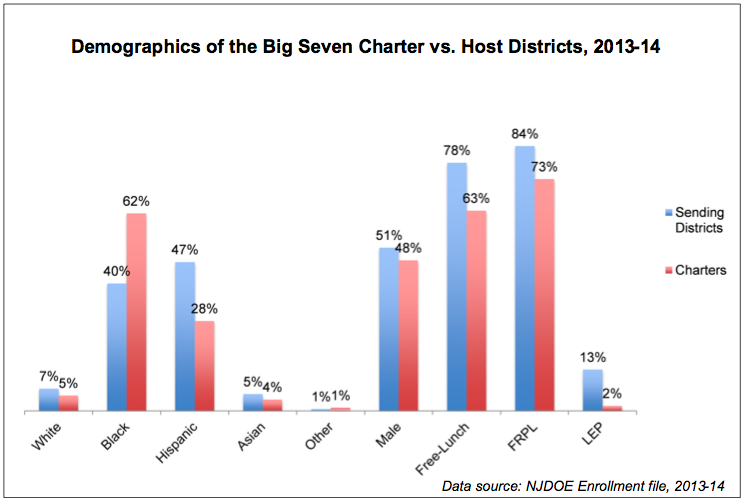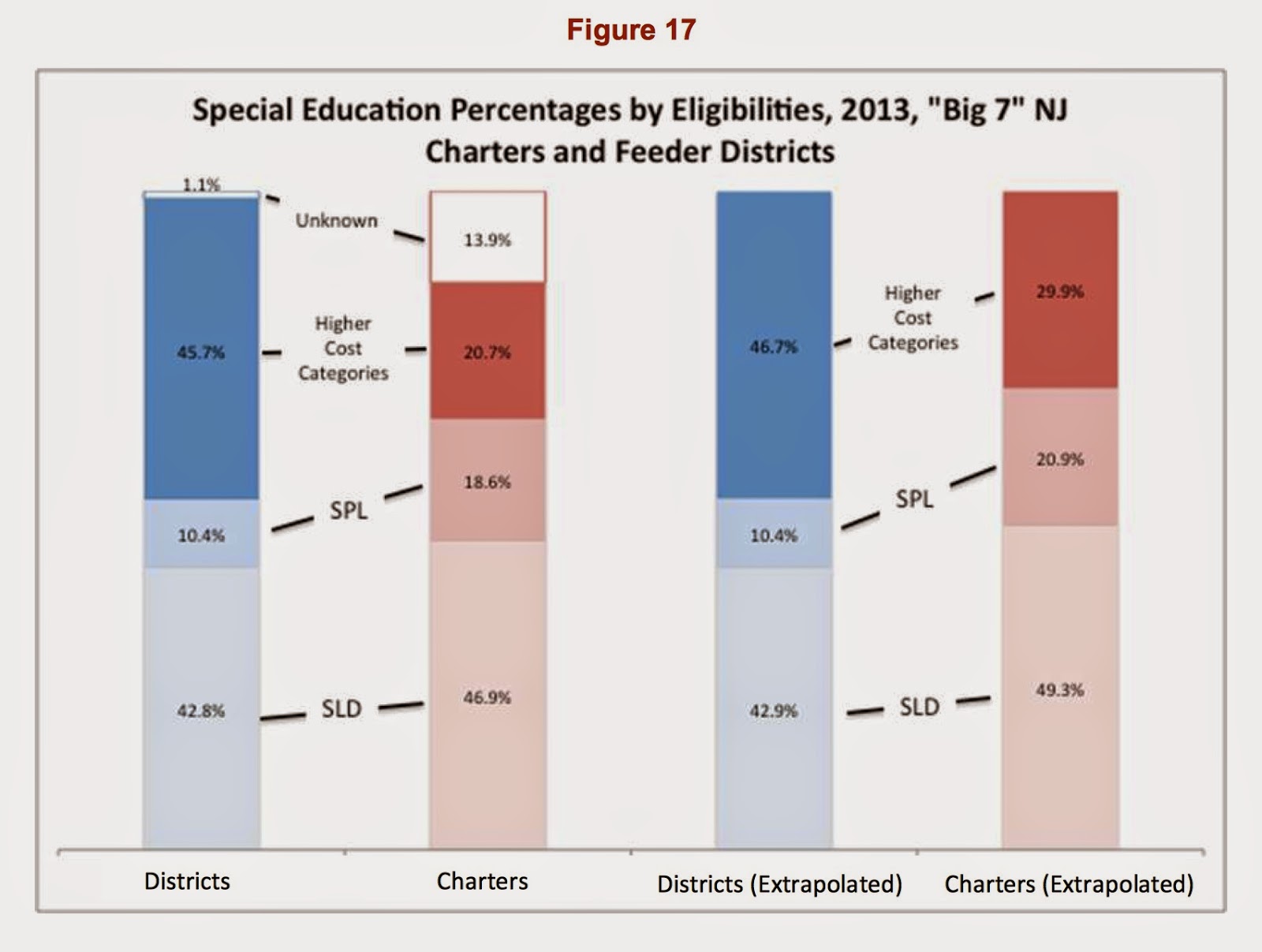Jersey Jazzman: New Study: NJ Charters Do NOT Serve As Many At-Risk, LEP, Special Ed Students
I have a new report out today -- commissioned by SOSNJ and coauthored with Julia Sass Rubin of Rutgers -- on charter schools in New Jersey. This is the first of three, and it looks at student population differences between charters and their host district schools.
No one who reads this blog will be surprised at our findings; however, this is the first time anyone, I believe, has looked at the charter sector this thoroughly to document our conclusion:
New Jersey's charter schools do not serve nearly as many children in economic disadvantage, who have special education needs, or who are English language learners as their host districts' schools.
This week, I'll go over some of the particulars of the report. But for now, let me share what I believe are the three most important graphs in our brief:
The "Big Seven" school districts host over three-quarters of the charter school population in New Jersey: Newark, Jersey City, Camden, Trenton, Paterson, Hoboken, and Plainfield. This is the most relevant comparison to make; comparing charter students to the entire state distorts the figures, because most charters are concentrated in these large urban districts.
The differences are clear: charters don't serve nearly as many children in economic disadvantage (ED), as measured by free-lunch or free & reduced-price lunch eligibility. As I'll explain later this week, free-lunch is the more important metric, because it represents a deeper level of ED.
The charter sector has pretty much left the education of Limited English Proficient (LEP) students to the district schools. This has serious consequences: LEP students need more resources and are thus more expensive to educate.
The racial differences are also striking. Segregation in New Jersey's schools are much more a product of differences between urban and suburban schools than any effects from charters. Still, there is a substantial difference in the relative proportions of Black and Hispanic students in the charters and their host districts' schools.
Next graph:
This one has profound consequences: NJ charter schools don't come close to educating the same proportion of special needs students as their host districts. This effects every analysis of charters, from their supposed cost efficiency to their student test outcomes. But we go further in this report to highlight a point that is often ignored in discussion of charter school expansion:
The methodology here is a bit complex; I'll explain it later this week. But no matter who you look at it, it's clear that the students with the higher-cost learning disabilities -- autism, visual and hearing impairments, emotional disturbances, cognitive impairments, etc -- are overwhelmingly being educated by the district schools, and not by the charters.
SLD is Specific Learning Disability; SPL is a speech impairment. These are the lower-cost disabilities -- even NJDOE says so. And they make up a much greater proportion of the special education students in the charter sector, who are educating smaller overall proportions of special education students anyway.
Any new legislation about charter schools must address this disparity, or else the district schools will continue to suffer a fiscal penalty for educating the students the charter schools do not educate.
More to come.
This blog post has been shared by permission from the author.
Readers wishing to comment on the content are encouraged to do so via the link to the original post.
Find the original post here:
The views expressed by the blogger are not necessarily those of NEPC.



